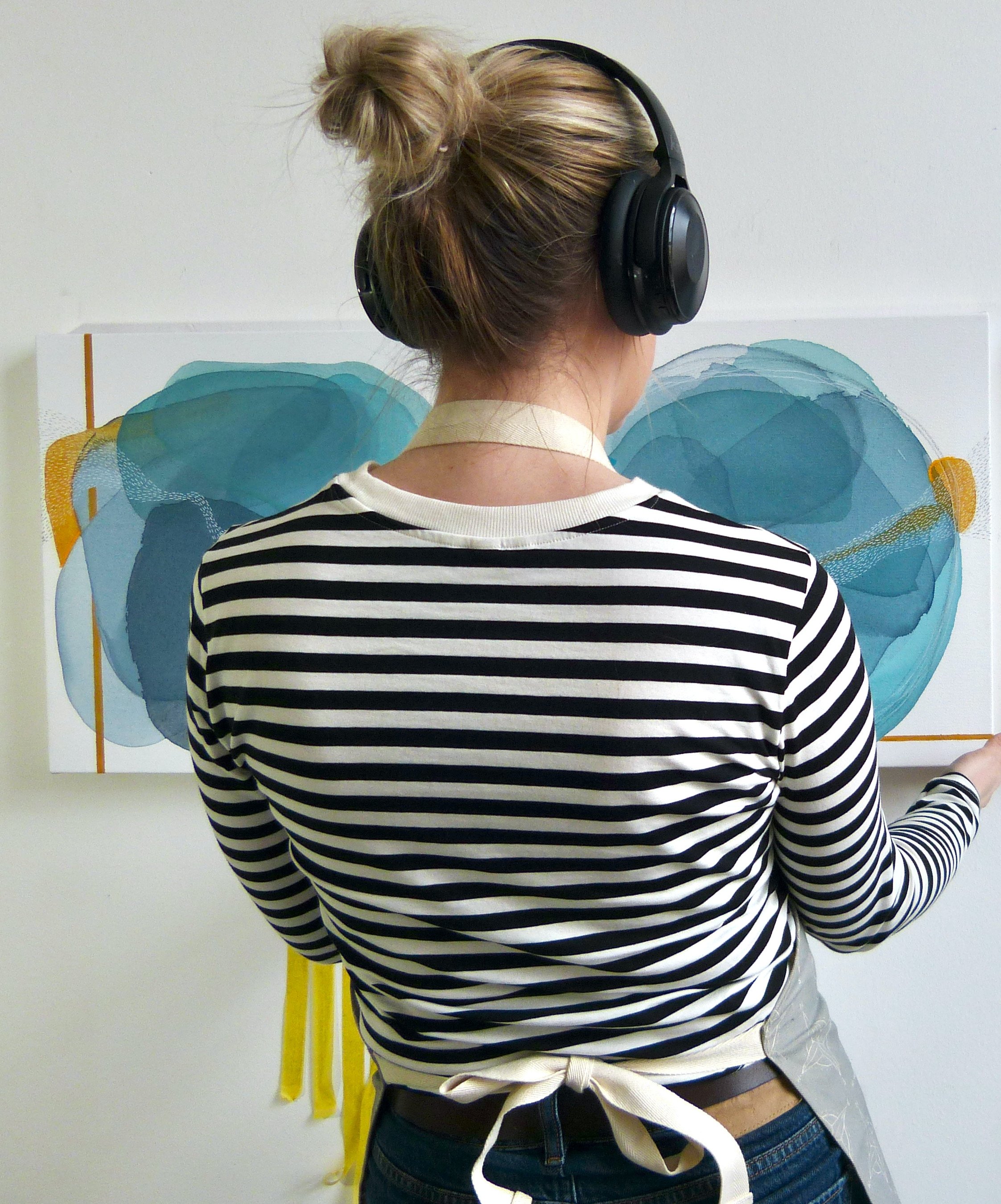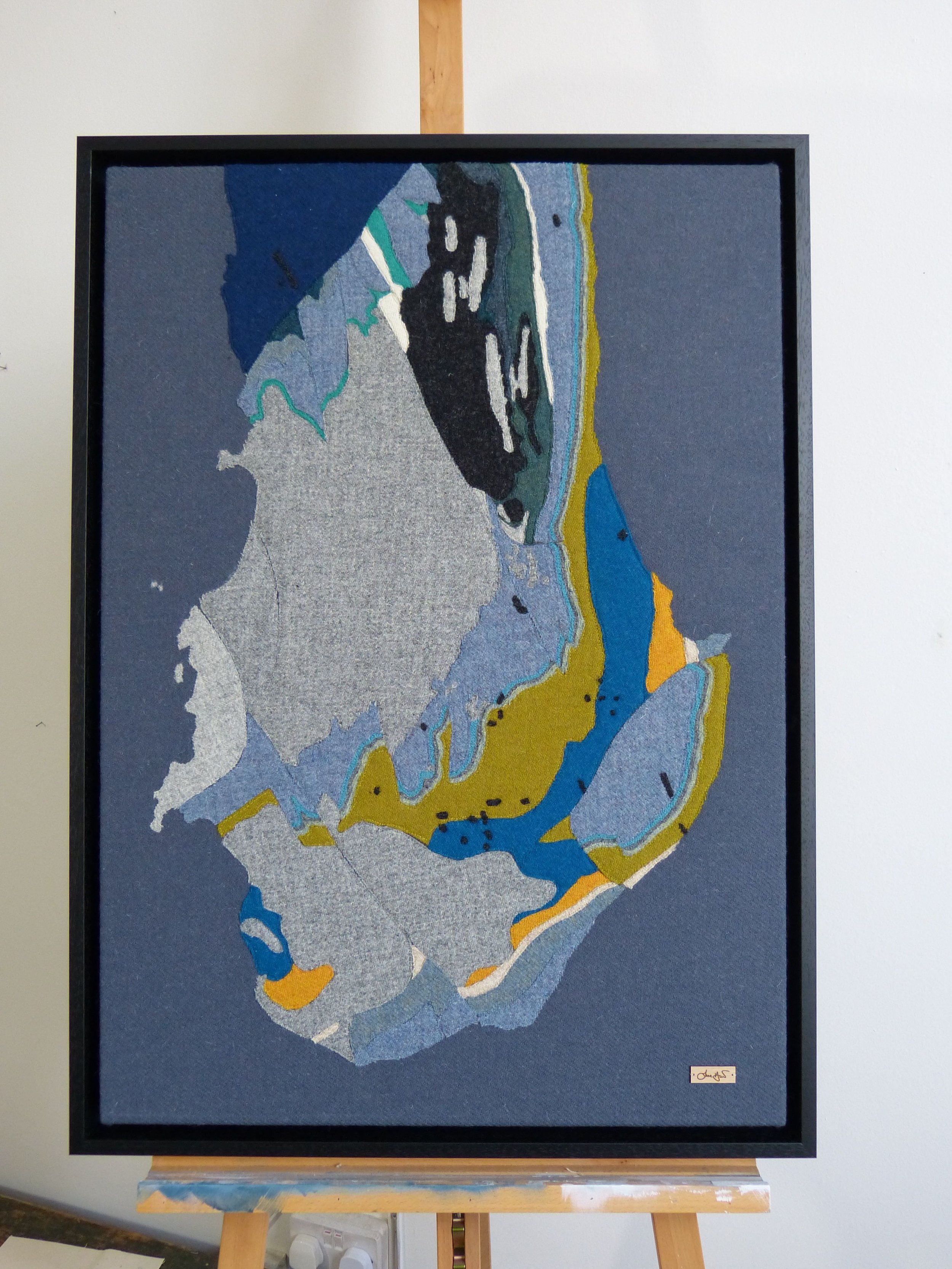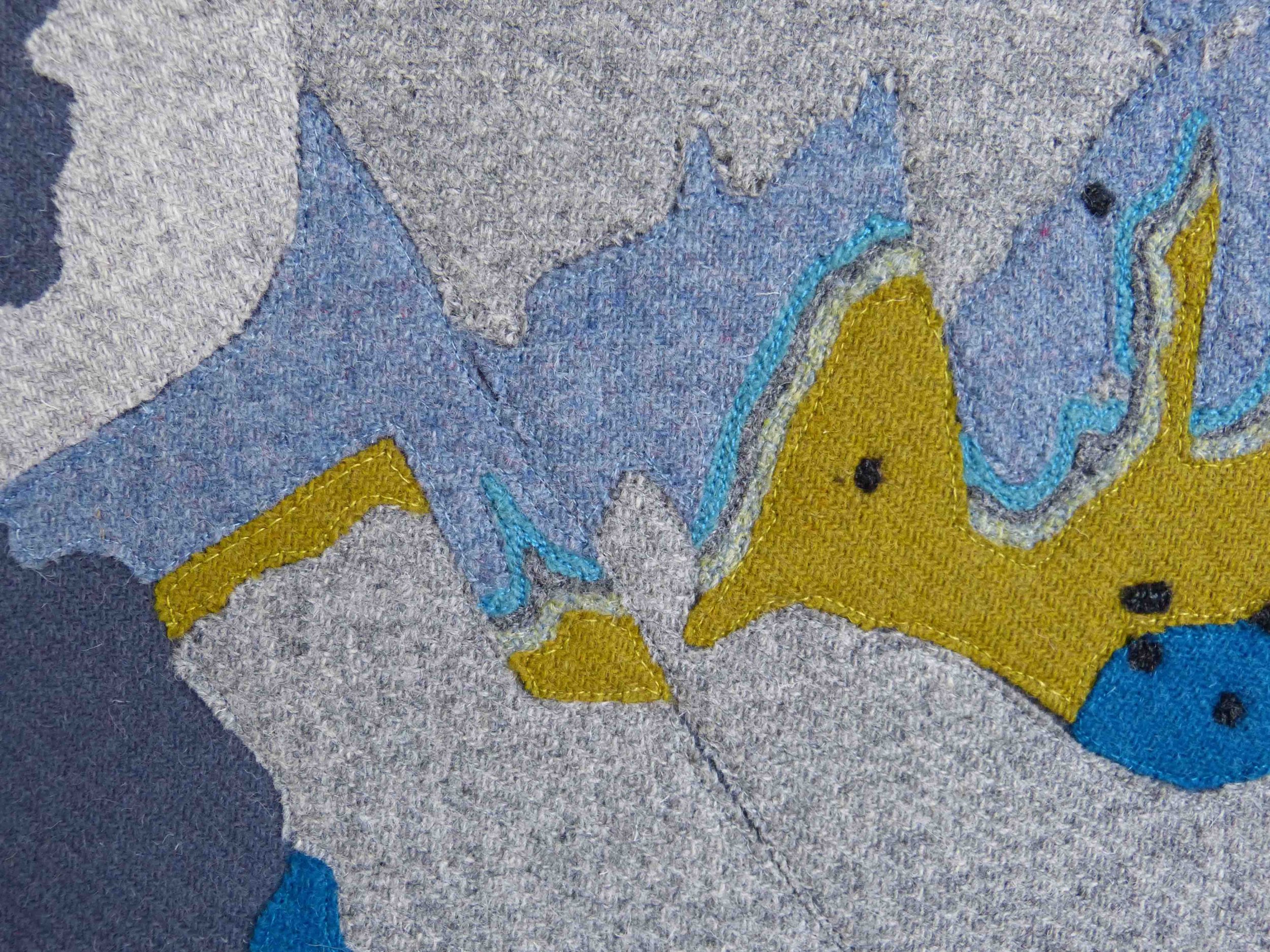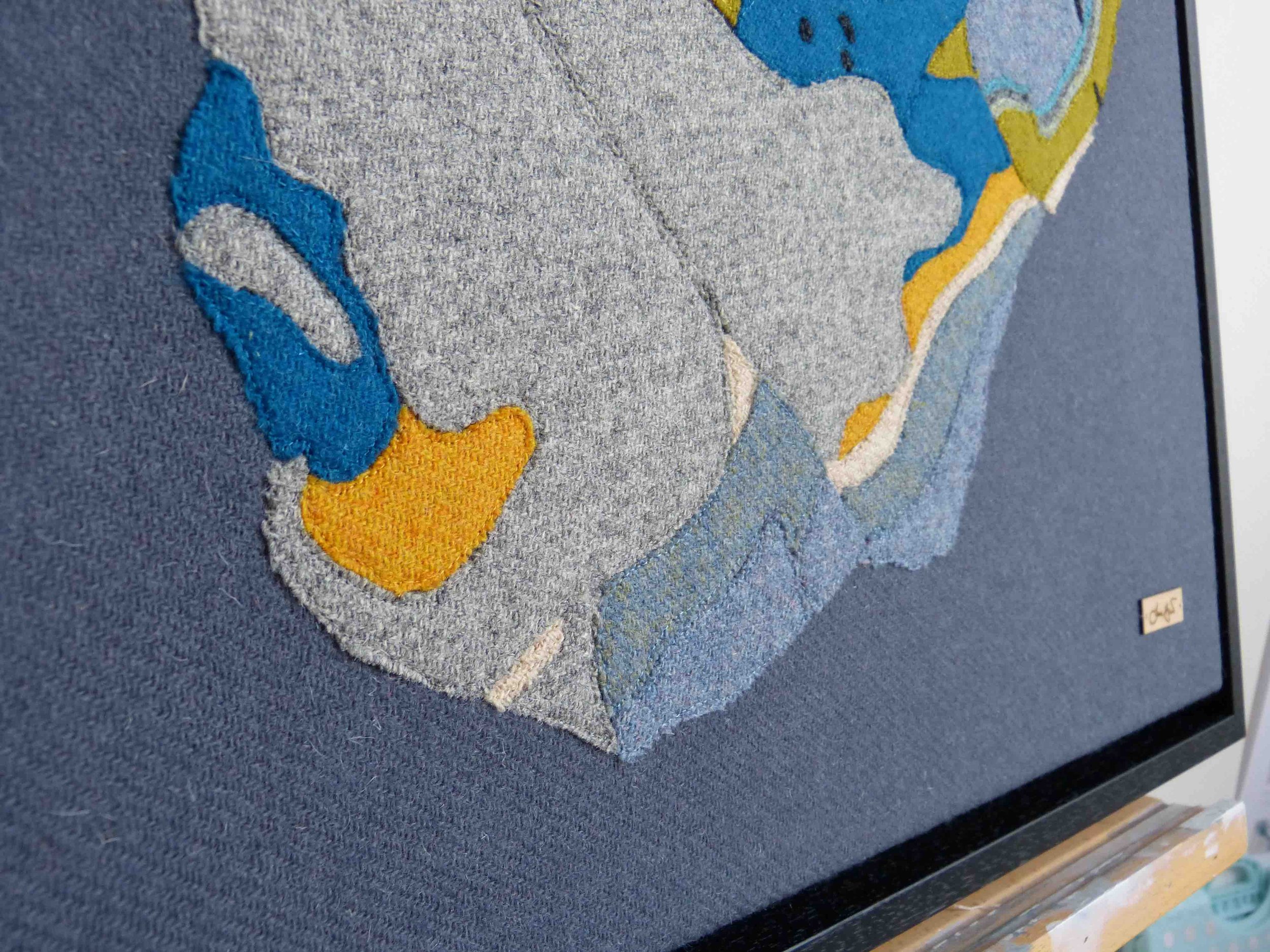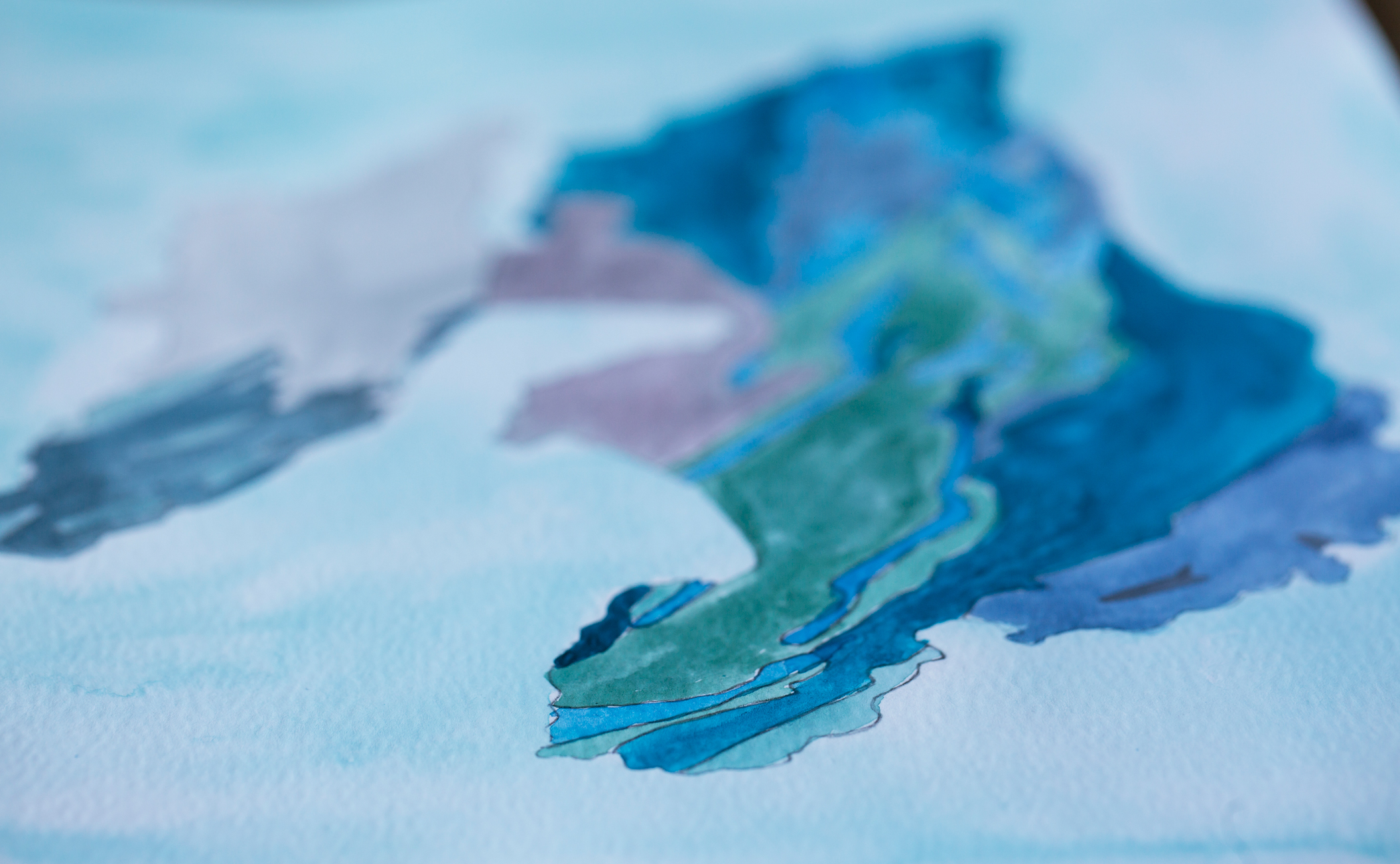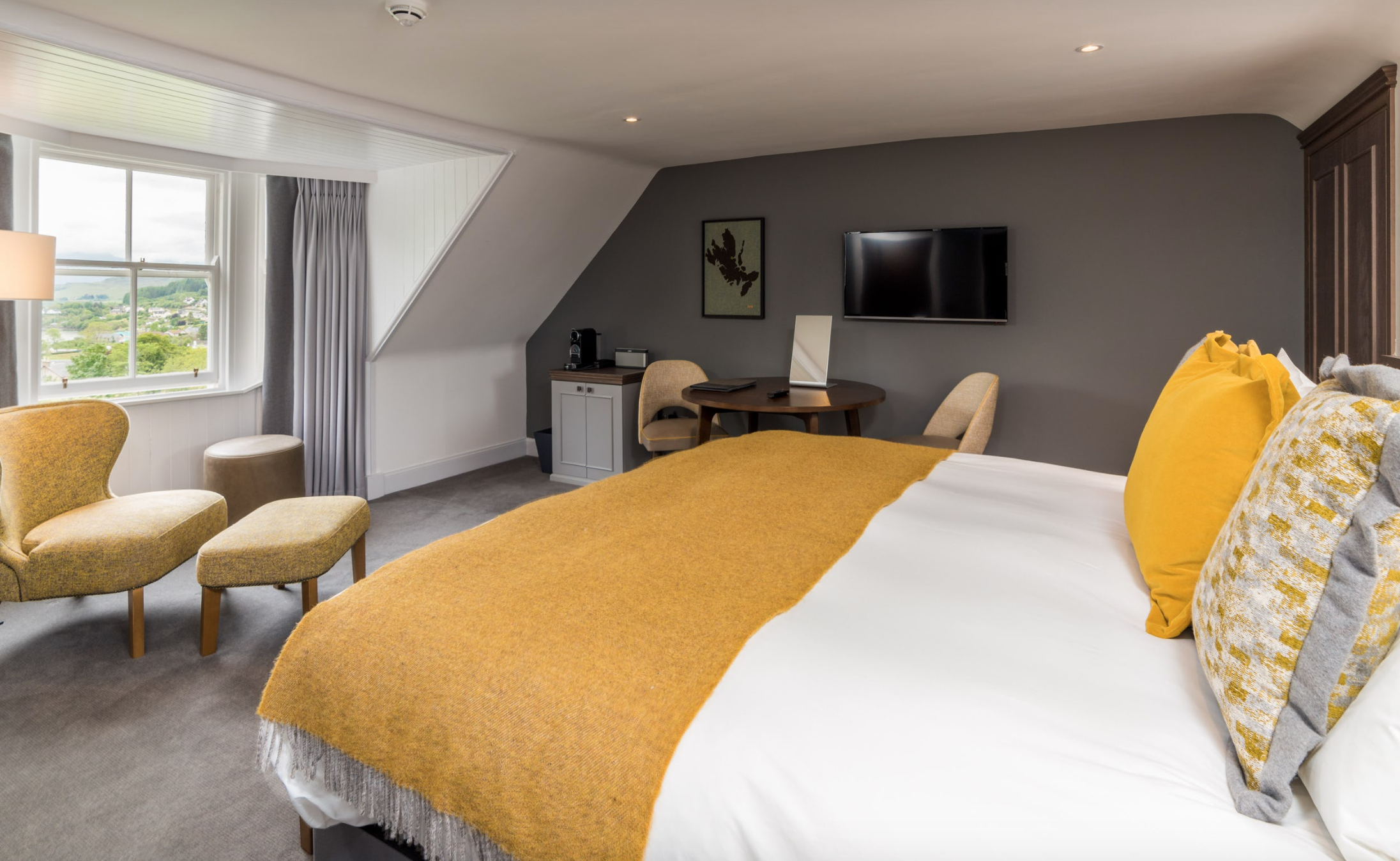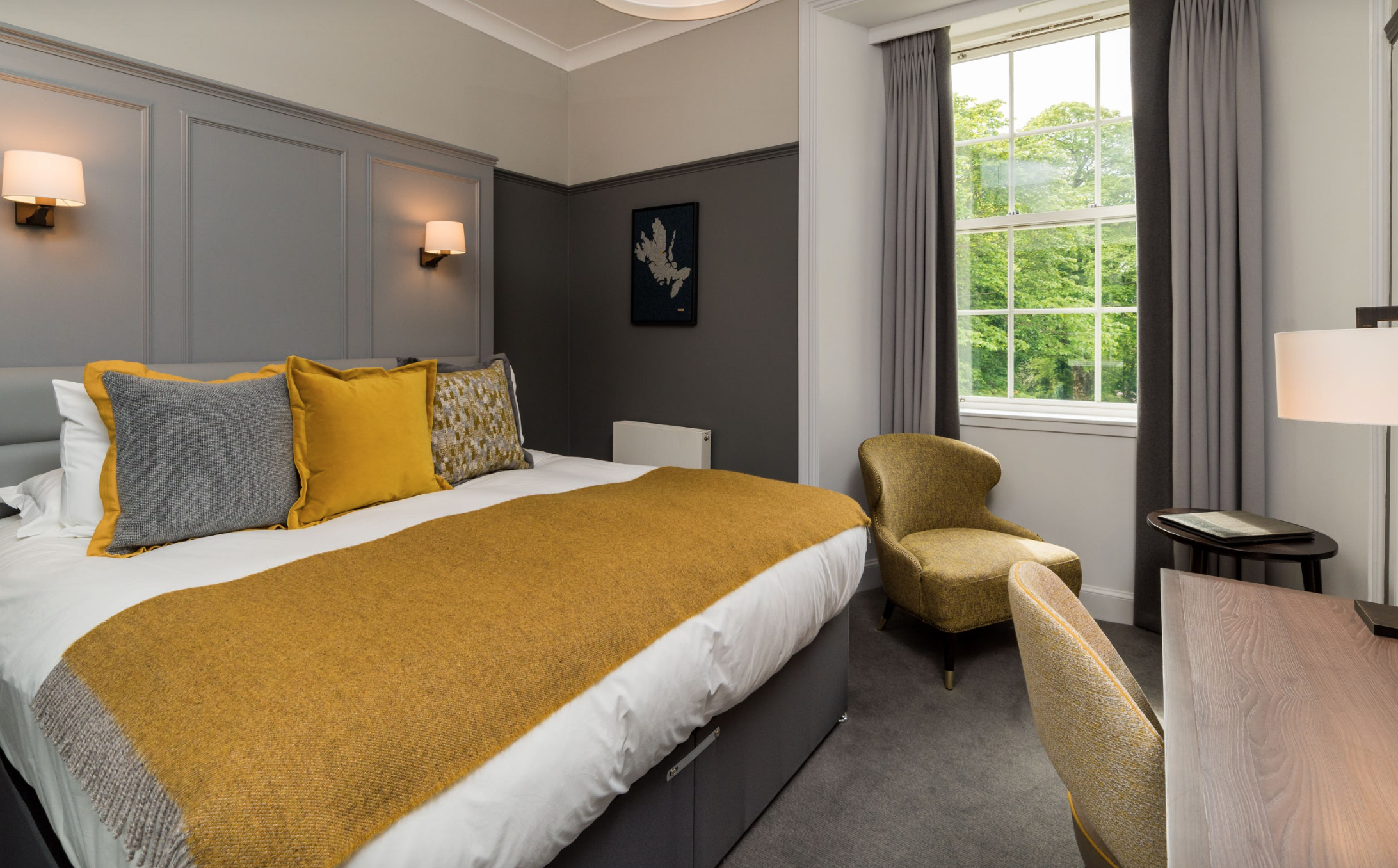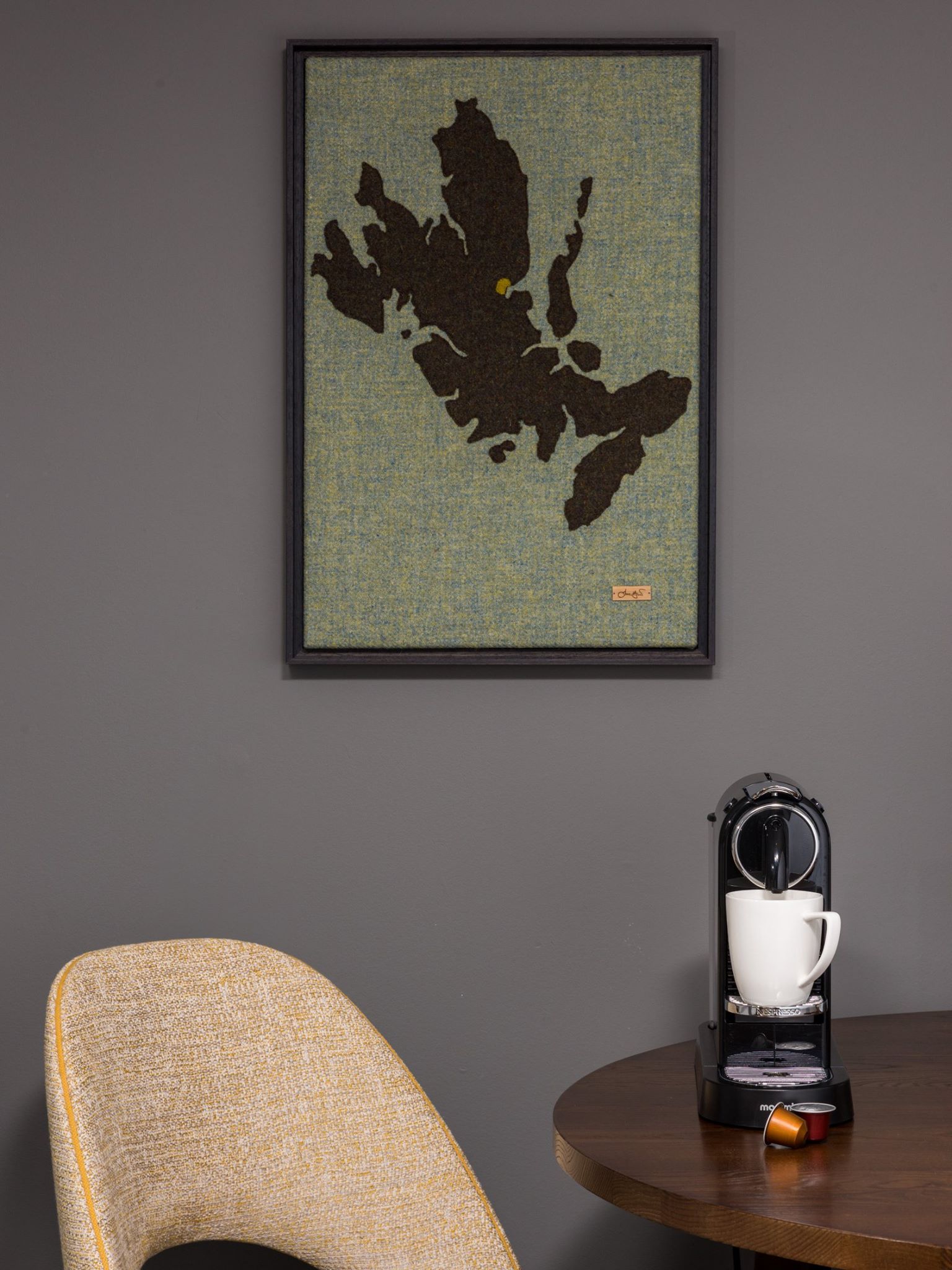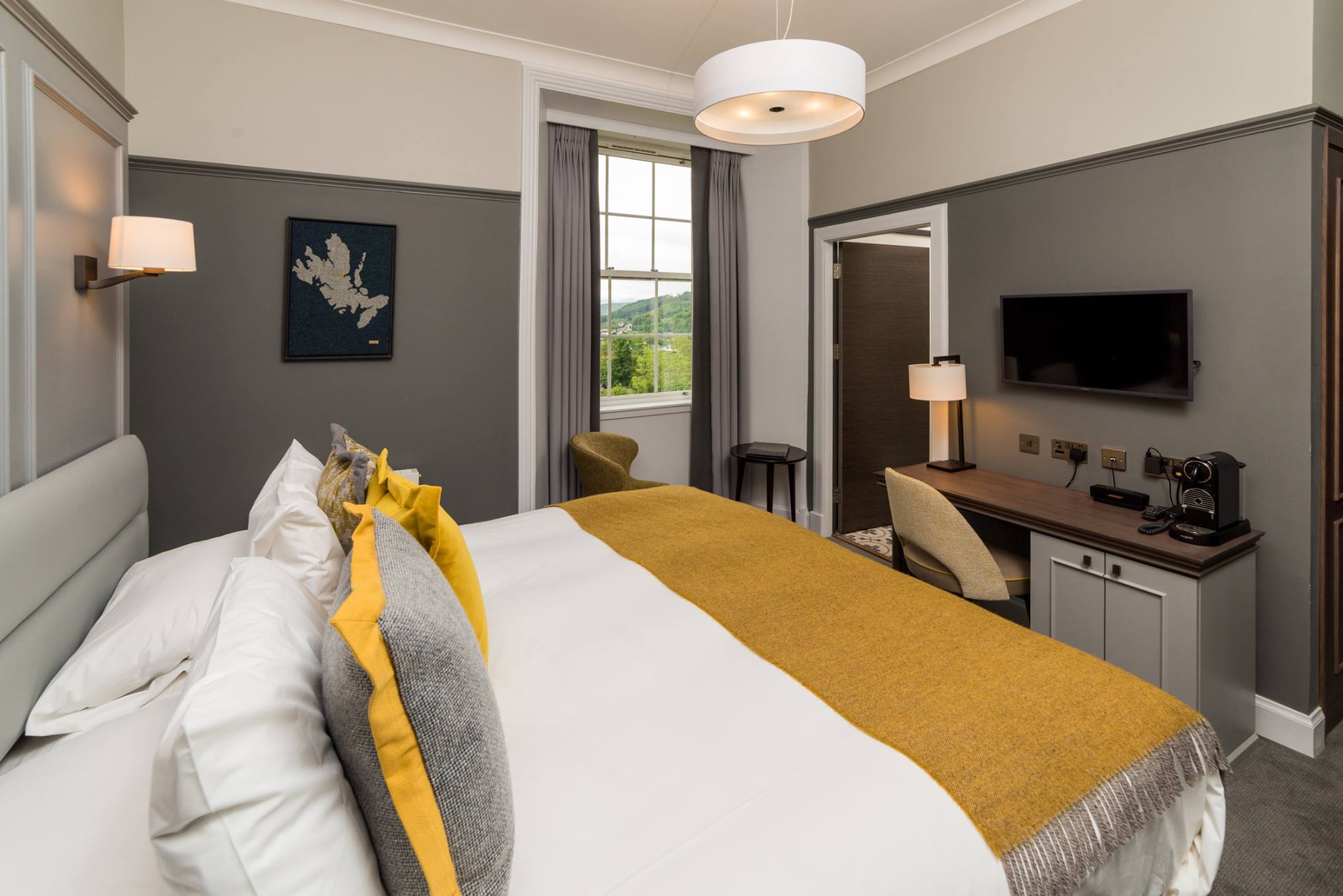I make paintings to communicate my thoughts and feelings, because I can rarely find the right words. This is often how I explain my motivation to paint and create, I find I can make more sense of the world around me through shape, colour and line. I do, however, consume all the words I can from a huge variety of talented writers, often in books but especially in the form of songs. At all points in my creative process from walking in the landscape to painting in my studio, my earphones feed me with wonderful inspiring words.
When I received an email from Tide Lines, a band which features strongly in my playlist, at the start of the year, it felt like a perfect collaboration. There are many parallels in our inspirations, landscape and place, the west coast of Scotland, thoughts of belonging and reflection about our place in the world. From “feel the breeze of the Hebrides” to “An ocean full of islands” the lyrics of Tide Lines songs evoke such strong imagery and emotion, so I was really excited to create something specially for the band. After a few video calls and discussions, about the (amazing and beautiful) lyrics and themes of the new album, my ideas for the cover artwork began to flow.
My paintings are made up of many layers, each needing to dry overnight before the next can be laid down. This forces a slowness and thoughtfulness to the process, allowing time to consider my next moves on the canvas. It also means I work on many paintings at one time, building layers of paint, pattern and marks - I ended up making three finished works for this project! Translucent watery shapes, overlapping and flowing into each other, bringing thoughts of peaceful reflection, togetherness and hope. Marks of journey and movement, glistening light, the passing of time. As often appears in my work, these organic elements are connected by the assurance of a solid form, an anchor point in the chaos.
My hope is that the final painting, which has now formed the cover of the album, goes some way to communicating, in a visual way, the stunning music and lyrics Robert, Ali, Gus and Ross have created.
I have also been delighted to see the creative ways that the painting, marks and paint strokes have been used by the Tide Lines team so far - the graphics for the ‘Written in the Scars’ and ‘These Days’ lyrics videos are so cool! Thank you so much to every one of the Tide Lines team, it’s been an absolute pleasure to play even a small part in this new album and such an exciting time for you all.
Hear more about the album and artwork in this lovely behind the scenes video from the band.
